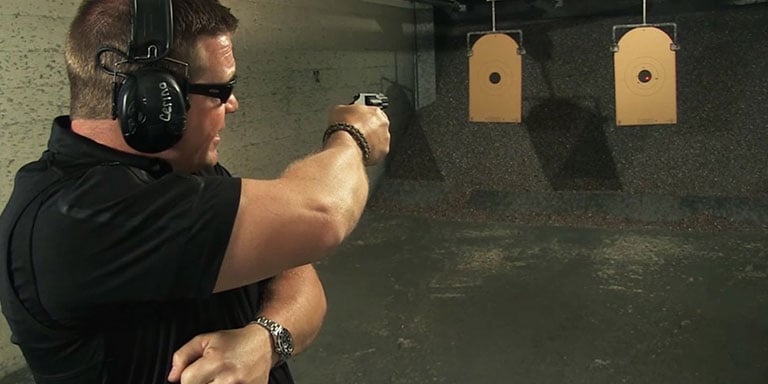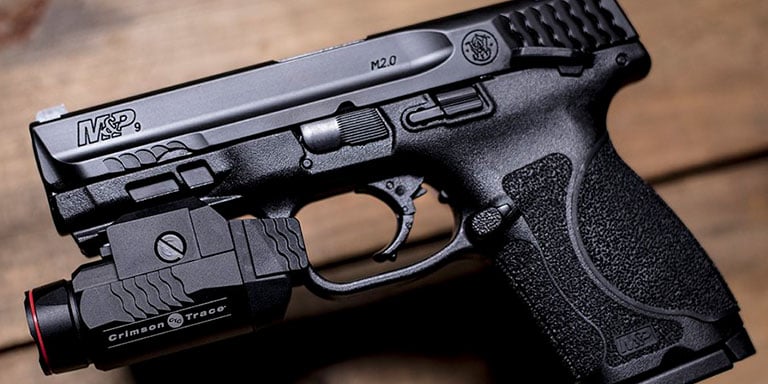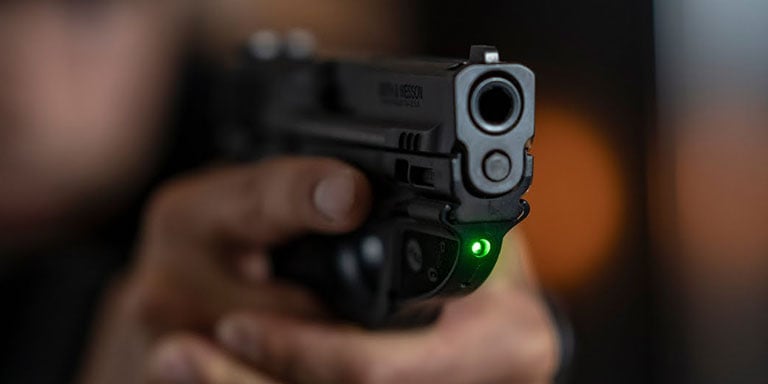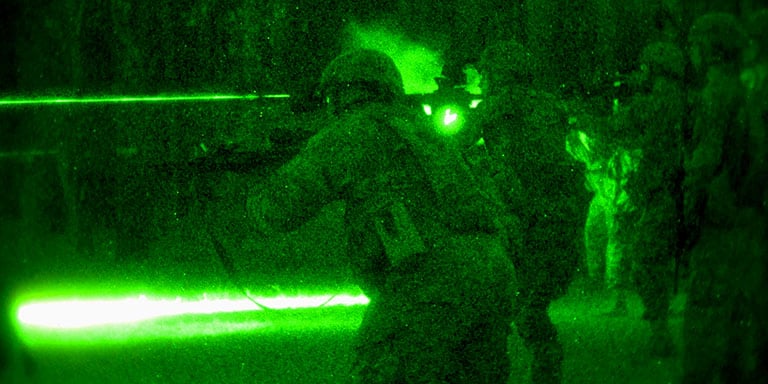How to choose a laser sight?

Laser sights have many useful and practical uses. They are great for helping new shooters get a feel for their gun's aiming system and can help improve overall accuracy. They can help even advanced snipers shoot faster and more accurately in self-defense scenarios where speed and accuracy are paramount.
Like most other types of shooting equipment, laser sights have many factors that you should weigh carefully before purchasing. In this guide, we'll cover the pros and cons of several types of laser sights, beam colors, mounting systems, and modes of operation.
Good reasons to use a laser sight

Laser sights bring a lot to the table. Obviously, they allow you to acquire a target faster and perform follow-up shots more accurately. They also make it easier to shoot accurately from less than ideal positions, like leaning into a corner.
Dry fire training is easier and more effective with a laser sight. Dot movements can help you see if your breathing, grip, or trigger pull needs to be adjusted. Laser-light combos are great for night shooting and can make your personal defense weapon more effective in dark areas.
Laser sights also have an intimidation factor that can help defuse a conflict before lethal force becomes unavoidable. Some studies suggest that abusers surrender more often when they notice the telltale red or green dot on their chest.
Reasons you might not want to use a laser sight
Of course, laser sights have some drawbacks that should be considered before buying one. They require calibration and occasional recalibration, similar to scopes should be zeroed . They use batteries that need to be changed regularly and are vulnerable to humidity, temperature extremes and shocks.
Adding a laser or light to your weapon makes it bulkier and heavier (especially pistols). In many cases, your handgun will no longer fit your current holster and you will need to purchase a new one designed to accommodate the laser sights. The extra weight will affect your weapon handling and you will have to get used to the difference.
It's also worth noting that lasers travel in a perfectly straight line, but bullets don't. Typically, bullets rise slightly after leaving the barrel and then begin to fall. At ranges less than about 50 yards, these elevation changes are usually negligible, but if you're using your laser sight for high-precision shots or long distance , be aware that the point will not necessarily be the actual point of impact of the ball. .
Laser sights can be a great and useful tool in your shooter's toolbox, but be careful not to rely on them too much. Always remember that a laser sight is an addition to your basic shooting bases, not a replacement for them.
Laser sight mounting options

There are five main styles of laser sights in terms of how they attach to your weapon.
-
Underbarrel Lasers - These are the most common, especially for handguns. They attach to Weaver or Picatinny rails and you may need tools to adjust them. They tend to be very stable and are not as prone to being misaligned by recoil as some other types. However, they almost always require a new case.
-
Grip Mounted Laser Sights - These lasers attach to (or replace) the grip of your gun and are pressure activated. They usually don't require a new case, but the accessory types are more easily misaligned. Replacement models are more stable but are not as widely available.
-
Guide Rod (or Internal) Lasers - This type of laser replaces the guide rod and sits inside the recoil spring of your semi-automatic pistol. They are exceptionally stable and easy to activate by pressing the new disassembly lever supplied with each model. These are the most accurate laser sights for pistols because the origin point of the laser is closest to the barrel. Guide rod lasers are also very shock resistant, but they tend to be quite expensive.
-
Trigger Mounted Laser Sights - This is a great option for guns that lack rail mounting systems and where internal lasers are not an option. They are less stable than both, but easy to install and relatively inexpensive. You may or may not need a new case.
-
Rear Sight Laser Sights - Rear Sight Lasers replace or attach to your existing rear sights and can be easily activated when drawing the weapon. They are generally stable, but some shooters find the odd shape annoying when trying to aim down sights.
Red lasers versus green lasers
Visible laser sights come in two colors: red and green. Each has its pros and cons, and the differences are more pronounced than you might think.
Red laser sights

Benefits
- Better battery life
- More affordable
- Less prone to failure in extreme temperatures (below 40°F and above 100°F)
- Components are more impact resistant
The inconvenients
- Less visible in bright light
- Harder to see at distances greater than about 30 meters
Green laser sights

Benefits
- Easier to see in bright light and at long distances
The inconvenients
- Less resistant to heat, cold and shock
- More expensive
- Shorter battery life
While it may seem like red lasers are clearly the better choice, visibility is a particularly important consideration that shouldn't be overlooked. Most self-defense situations happen at night or in dimly lit areas, so if you're buying a laser for your CCW pistol , a red may suffice. However, if you want to be sure you'll still be able to see the laser, a green laser may be the best bet, even in light of their most flaws.
infrared laser

Visible lasers aren't the only ones available; there are also invisible ones. Infrared lasers cannot be seen with the naked eye; they only appear using night vision equipment. IR laser sights are quite niche and generally useless for most applications outside of military and law enforcement night operations. However, some civilians like Night Hunters may find them useful.
Modes of operation of the laser sight
Laser sights can typically operate in one of three modes (although not all models support all three modes): always-on, momentary, and pulsed.
Always-on mode (or continuous operation) is exactly what it sounds like: the laser stays on until you turn it off. Most (if not all) laser sights have this mode, which is suitable for most training, police, military, and self-defense operations.
Momentary mode is often useful for hunters, police snipers, and other shooters who don't want the target startled when they notice the laser. Upon activation, the laser turns on for a brief moment, then turns off. It also allows the shooter to confirm they are on target just before firing.
Pulse mode turns the laser on and off quickly and intermittently. Its main advantage is that it preserves battery life more efficiently than continuous mode. This can extend the typical battery life of a red laser from 4-5 hours to 10-12 hours.
With proper use and regular practice, laser sights can be a great aid to any shooter. From hunting to training to personal defense, there's almost no job they can't make easier and more efficient. A laser sight well suited to your needs and your preferred weapon can certainly be a worthwhile investment.
1 comment
Existe il des lasers à tige guide pour un pistolet CZ Chadow 2 ?
Et à quel prix !